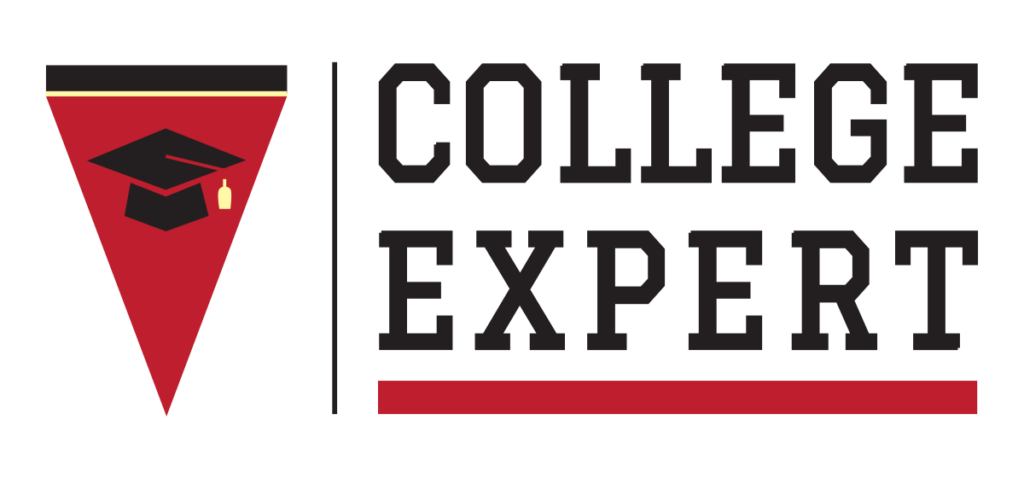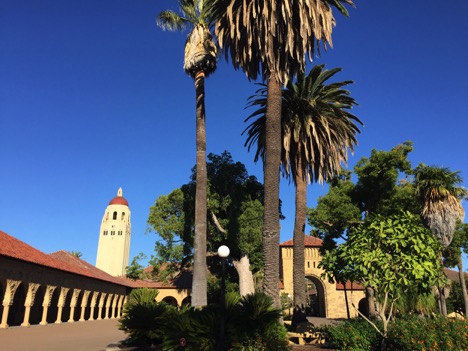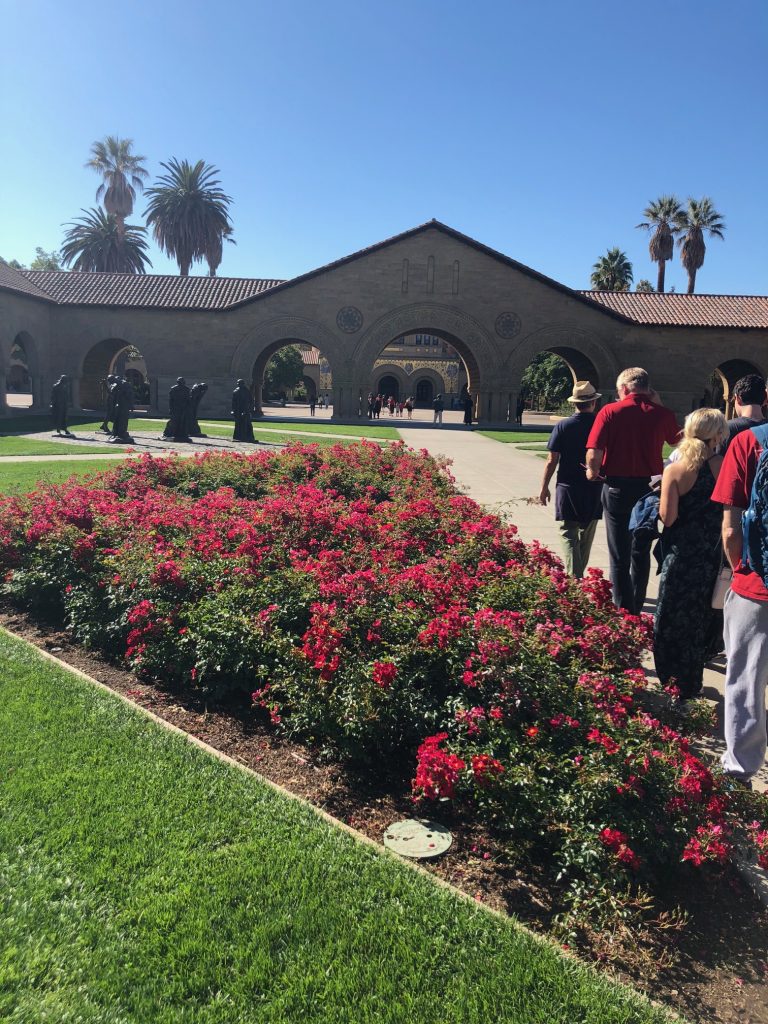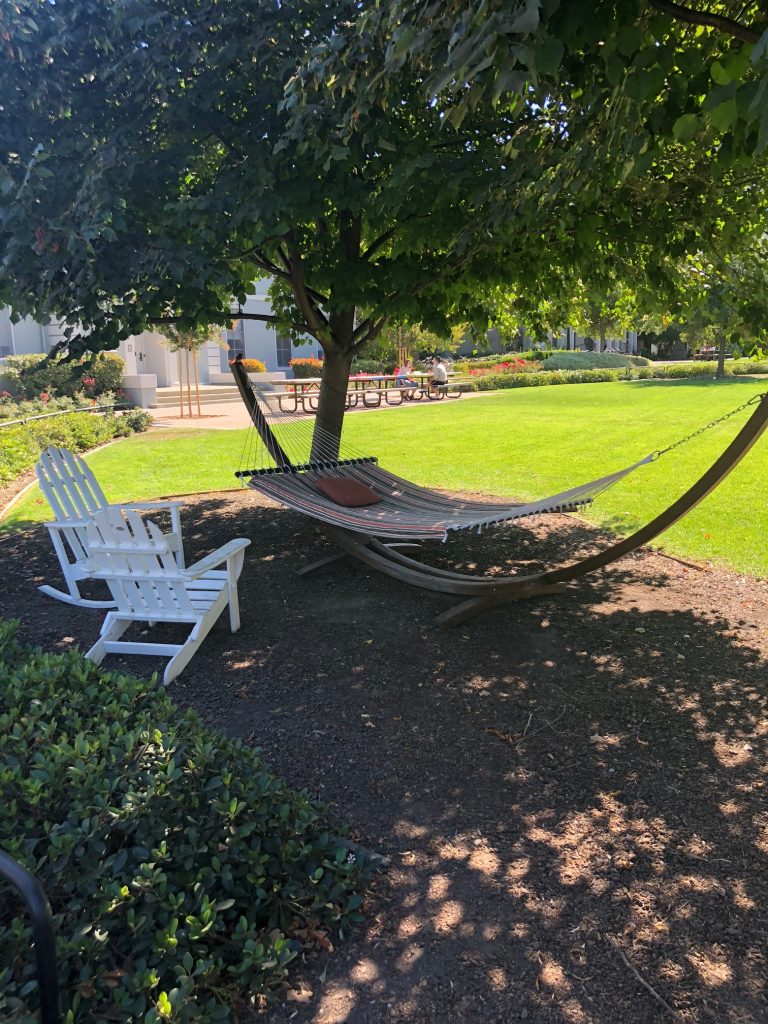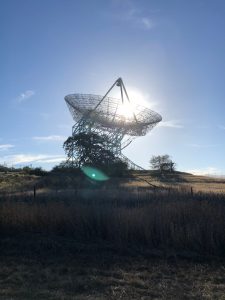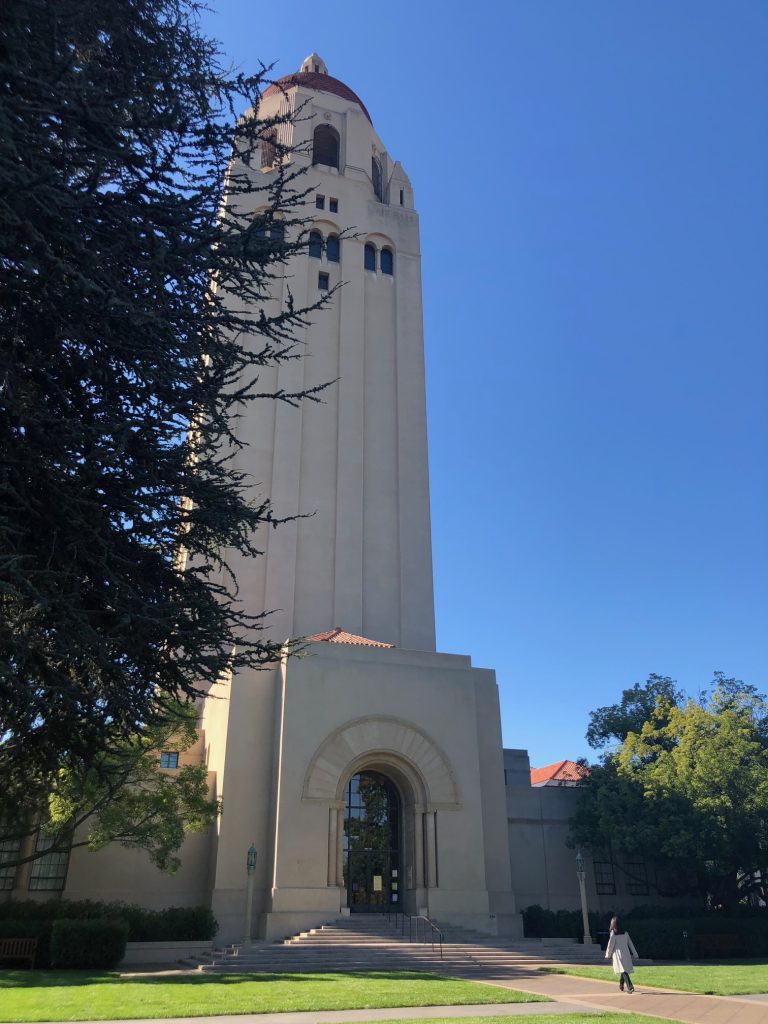An invitation to a wedding in Napa Valley opened up the opportunity to tour colleges in the Bay Area. So in October of 2018, I was able to spend three nights in Palo Alto and visit 5 colleges. Every day was 75 and sunny. We loved Palo Alto with all the amazing restaurants, outdoor activities, and of course, the tech companies in Silicon Valley. Visiting Stanford was the highlight of the trip.
Located on the edge of Palo Alto, the heart of Silicon Valley, Stanford University’s vast campus houses seven schools (Humanities and Sciences; Engineering; Earth, Energy and Environmental Sciences; Business; Law; Education; and Medicine), eighteen research centers and institutes, twenty libraries, several sports stadiums, art museums, a hospital, a golf course, a concert hall, and a shopping mall. Stanford has more than 16,000 students, about 7,000 of which are undergraduates. The Stanford community currently boasts 17 Nobel laureates. Stanford is big on both academics and sports; the Cardinal have won 130 national championships and 115 NCAA championships.
Location
Stanford University sits on more than 8,000 beautiful acres in California’s Bay Area. Its campus borders Palo Alto, Menlo Park, and Mountain View. The closest airports are in San Jose, 15 miles to the south, and San Francisco, 35 miles to the north. Palo Alto is known as the “Birthplace of the Silicon Valley,” since it is where the Hewlett Packard Corporation was launched. Palo Alto is a wealthy town with a population of 66,000 people, and it has a plethora of wonderful restaurants and shops.
Academics
- Stanford operates on the quarter system; the 9-month academic year consists of fall, winter, and spring quarters. Very few students take classes summer quarter.
- Stanford offers 65 majors and 14 joint bachelors of arts and sciences majors. Joint majors that combine computer science and humanities include CS + Art Practice, CS + Philosophy, CS + Music, CS + History, CS + Classics, and CS + English.
- All undergraduates must complete writing and rhetoric requirements, take one Thinking Matters course freshman year, and take one year of a foreign language. In addition, students must take eleven courses in eight general education subject areas: aesthetic and interpretive inquiry; applied quantitative reasoning; creative expression; engaging diversity, ethical reasoning; formal reasoning; scientific method and analysis; and social inquiry.
- Freshmen and sophomores have the option of taking special small seminar classes called introductory seminars; the introductory seminars are taught by faculty from all seven schools. Topics include the Aesthetics of Data, Anatomy and Society, Ancient Myth in Modern Poetry, and Becoming Kinder.
- Students must declare their major by the end of their sophomore year.
- The most popular majors at Stanford are Computer Science, Engineering, Human Biology, and Science, Technology & Society.
- The student-faculty ratio is 4:1.
Student Life
Most students walk or bike to class; Stanford is a very bicycle-friendly university. Students can also keep cars on campus. About a quarter of Stanford students belong to the one of 15 fraternities or 14 sororities on campus. There are more 600 student organizations on campus, including publications, religious organizations, political groups, community service clubs, ethnic/cultural organizations, and LGBT organizations. A cappella groups, Taiko, and the Leland Stanford Junior University Marching Band are very popular.
Housing and Dining
All undergraduates are guaranteed four years of on-campus housing, and most undergrads choose to live on campus. After freshman year, many students try to live in one of the row houses. Some of the row houses have themes, such as the French House and the Italian House. Houses are either self-op (meaning they are run by the university and a personal chef cooks the meals) or co-op (meaning the student residents manage the house and cook the meals). Other options for housing include apartments and suites, fraternity and sorority houses, and traditional dormitories. Students living in dorms use their ID cards to purchase meals in dining halls, which offer all-you-can-eat food buffets with unlimited trips through the food service lines.
Tresidder Memorial Union offers fast food options and a Starbucks. There are also several wonderful restaurants on campus, including The Axe and Palm (specializing in burgers) and the Stanford Coffee House (called “the CoHo”), which has live music.
Admissions
Stanford takes a holistic approach to admissions, and real people review each application, so there are no cutoffs for test scores or GPA. Admissions places most emphasis on transcripts and the degree to which students have challenged themselves academically by taking hard classes. When reviewing applications, admissions officer want to see that students have taken full advantage of the educational opportunities at their high school. Admissions reps are assigned to specific regions, and they get to know the high schools in their region very well; they know what each high school offers in terms of advanced and AP classes. Extracurricular activities are also important for admissions, but admissions prefers deep commitment to a few special interests over broad, superficial involvement. If students submit SAT subject tests scores, it’s best to have one subject in the liberal arts (i.e. literature, world history, US history, or a foreign language).
Financial Aid
- Admissions are need-blind, and students are given need-based financial aid
- If parents make less than $65,000 per year, tuition is free
Fun Facts
- Stanford was founded by Leland and Jane Stanford as a memorial to their son, Leland Stanford Junior, who died of typhoid fever at age 15. The university’s official name is Leland Stanford Junior University in tribute to him.
- The mascot is the Stanford tree, but the sports teams are called the Cardinal (after the color, not the bird).
- Students who study STEM subjects are called “techies.” Students who study the humanities and social sciences are called “fuzzies.”
- Google was started at Stanford by Larry Page and Sergey Brin when they were grad students in Stanford’s School of Engineering.
- Stanford’s nickname is “the Farm,” since its campus used to be a stock farm for breeding and training Leland and Jane Stanford’s horses.
- The “Dish” is a 150-ft diameter radio telescope in the foothills behind campus. More than 2,000 people run or hike “Dish Hill,” a conservation area grazed by goats, each day.
- Stanford’s Rodin Sculpture Garden is the largest collection of Rodin bronzes outside of Paris.
- Memorial Church (called “MemChu”) is a spectacular, prominent feature of campus and sits in the heart of the Main Quad. MemChu is non-denominational and offers multi-faith services in addition to denominational and non-denominational Christian services. Stanford itself is not religiously affiliated.
- Big Game is the annual football game against UC-Berkeley. The winner takes home the coveted “axe.” Big Game is preceded by Gaieties, a student-produced musical comedy.
- The Wacky Walk is a Stanford graduation tradition in which seniors galavant around the Stanford Stadium in costume before the commencement ceremony.
- Half of Stanford students choose to study abroad their junior year. Stanford has overseas programs in Australia, Berlin, Cape Town, Florence, Istanbul, Kyoto, Madrid, Oxford, Paris, and Santiago.
- The Hoover Tower is a famous landmark on the Stanford campus. It is part of the Hoover Institution on War, Revolution and Peace, a public policy research center founded by President Herbert Hoover.
